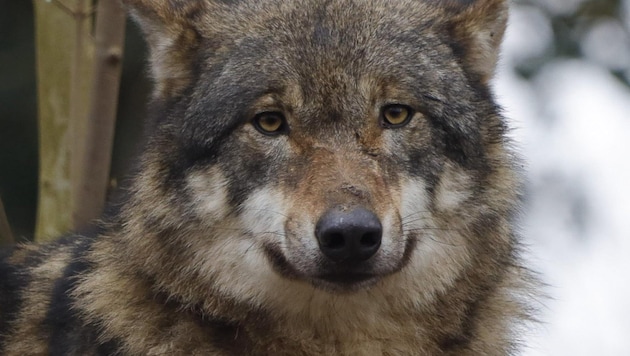Protection relaxed
Fox in wolf’s pelt identified in many kills
The protection of wolves has been lowered to EU level and this could also have concrete consequences for Upper Austria and the Isegrim could be targeted more often by hunters. The "Krone" newspaper took a look at how often wolves were seen in Upper Austria this year and where they struck. And there are some surprises.
It's (almost) enough to make you cry: This year, 109 wolf sightings have already been reported to the province of Upper Austria. But in most cases there is no photographic or video evidence. And, what is really curious, the DNA analysis of suspected wolf kills also exonerates Master Isegrim, at least on the surface. This is shown by a look at the wolf management's current list, starting on January 2, when a dead deer was discovered in Redleiten. "Examined - DNA analysis: fox confirmed", summarize the provincial sleuths.
A "genuine Italian"
On January 15, wolf DNA was actually recovered in Traunkirchen. This occurred again on March 15 in Molln and on March 28 in the case of a carcass found in Sarleinsbach and Atzesberg, as well as on April 10 in Langenstein, on April 16 in Oberhofen am Irrsee and on May 28 in the case of two dead sheep in Sandl. The last "corpus delicti" so far: a dead deer in Galfenz. According to DNA analysis, the perpetrator was a genuine Italian, i.e. a "Lupo".
"After-eaters" leave their DNA behind
"You have to treat the DNA analyses with caution, because often only traces of saliva from foxes, which are so-called scavengers, are found on the bite wounds," explains forestry director and wolf expert Gottfried Diwold: "That doesn't mean they weren't wolf bites, it just means they can't be proven with certainty."
All "problem animals" escaped the hunters
Last year, there were 45 wolf sightings across the country, this year more than twice as many. 31 livestock kills were recorded in 2023, this year only six. Two wolves were killed last year, this year there were two shooting permits, but all the animals escaped.
The primordial fear of the evil wolf is all well and good - but if you look at the wolf management figures, it raises doubts as to whether there really is a big problem.
This is because DNA analysis, the gold standard for detecting isegrims, leads to the conclusion that although many wolves have been sighted, very few kills have actually been proven to have been committed by them.
Conversely, this means that the four-legged predators have either almost collectively become vegetarians, if not vegans. Or that there are not as many as feared - and that many a wolf in the forest was a duck.
This article has been automatically translated,
read the original article here.












Liebe Leserin, lieber Leser,
die Kommentarfunktion steht Ihnen ab 6 Uhr wieder wie gewohnt zur Verfügung.
Mit freundlichen Grüßen
das krone.at-Team
User-Beiträge geben nicht notwendigerweise die Meinung des Betreibers/der Redaktion bzw. von Krone Multimedia (KMM) wieder. In diesem Sinne distanziert sich die Redaktion/der Betreiber von den Inhalten in diesem Diskussionsforum. KMM behält sich insbesondere vor, gegen geltendes Recht verstoßende, den guten Sitten oder der Netiquette widersprechende bzw. dem Ansehen von KMM zuwiderlaufende Beiträge zu löschen, diesbezüglichen Schadenersatz gegenüber dem betreffenden User geltend zu machen, die Nutzer-Daten zu Zwecken der Rechtsverfolgung zu verwenden und strafrechtlich relevante Beiträge zur Anzeige zu bringen (siehe auch AGB). Hier können Sie das Community-Team via unserer Melde- und Abhilfestelle kontaktieren.